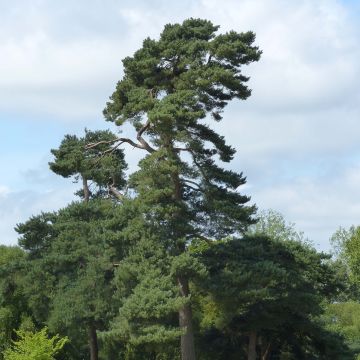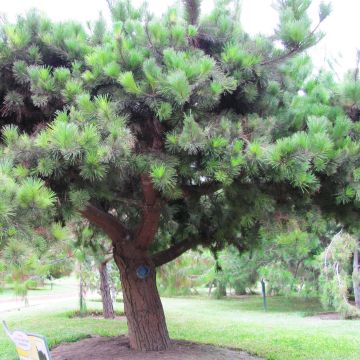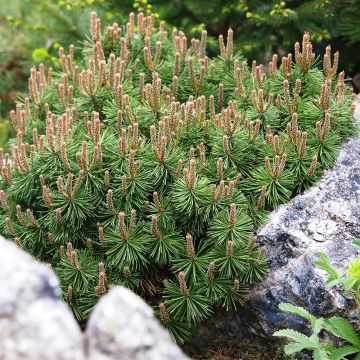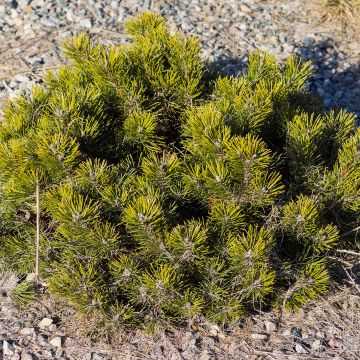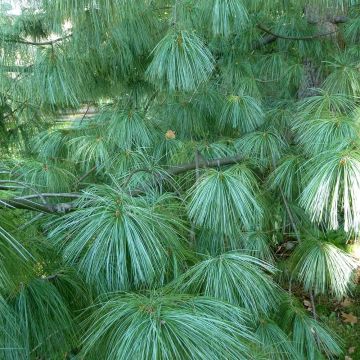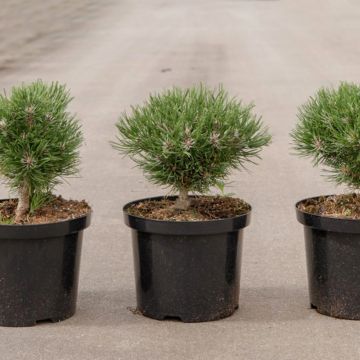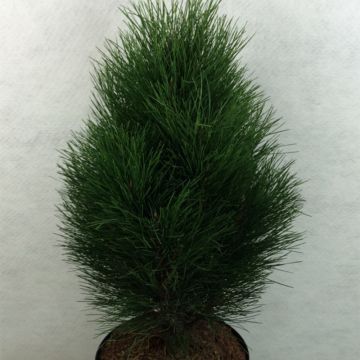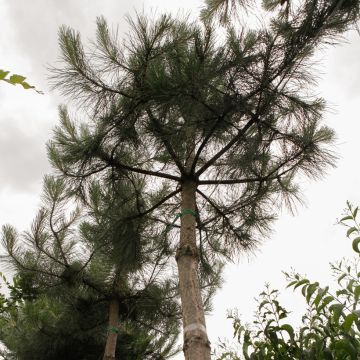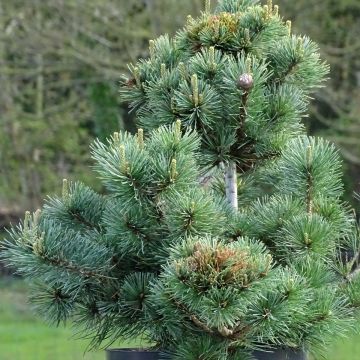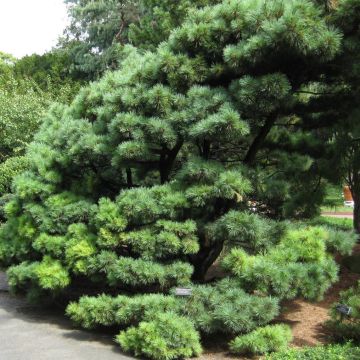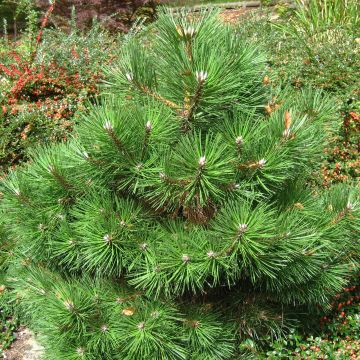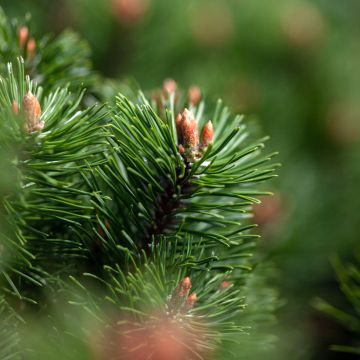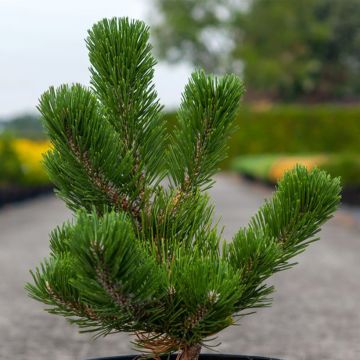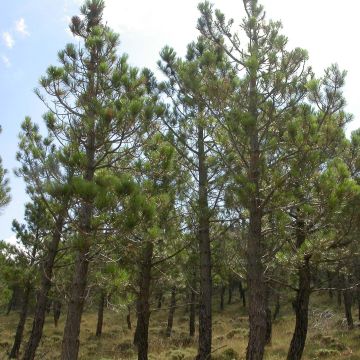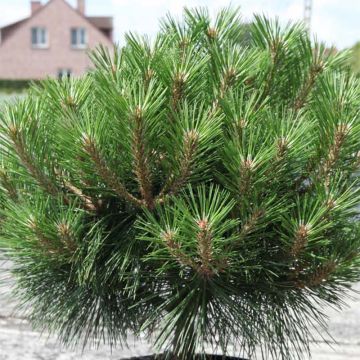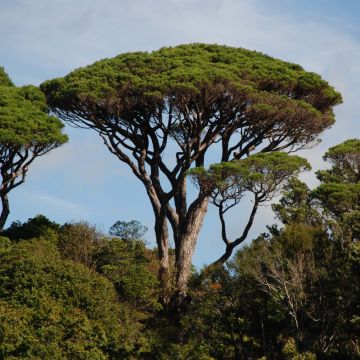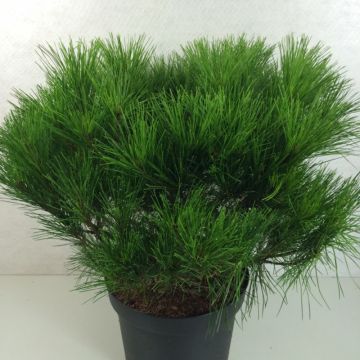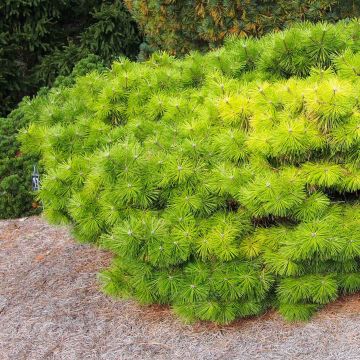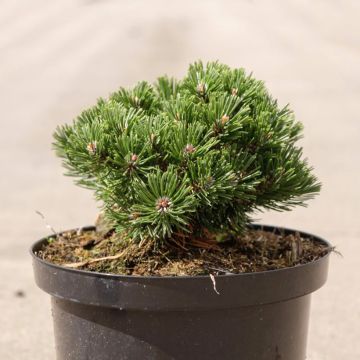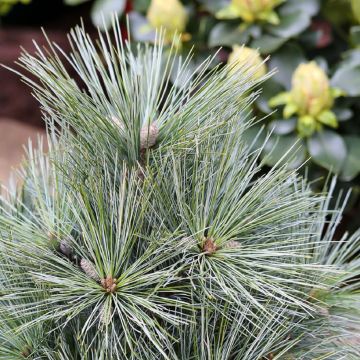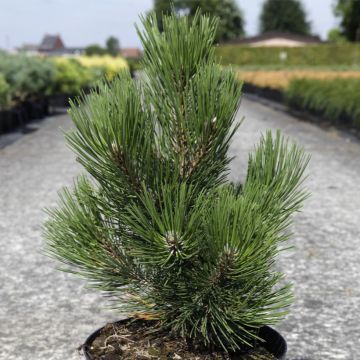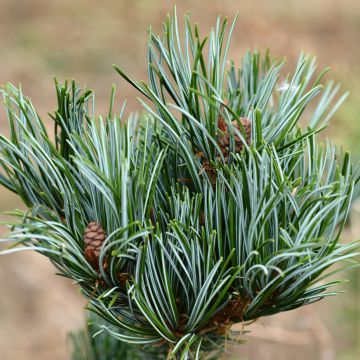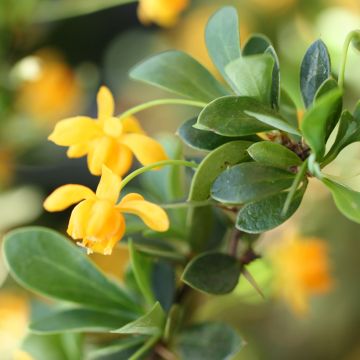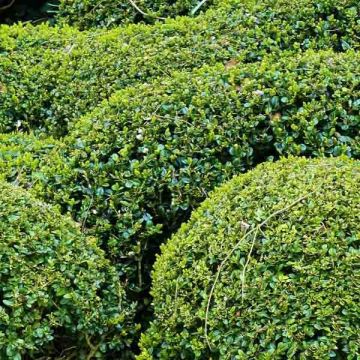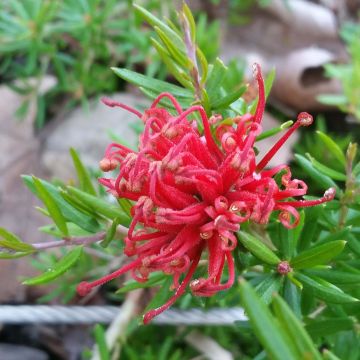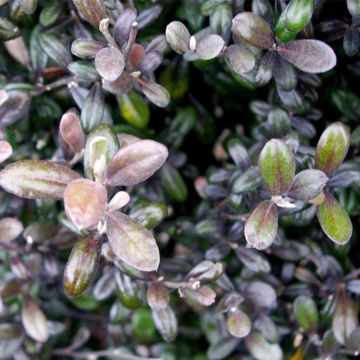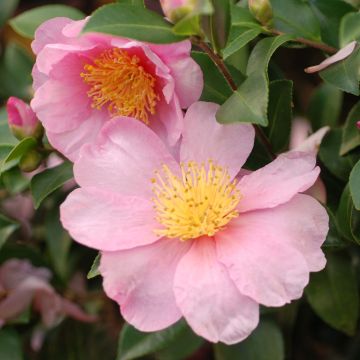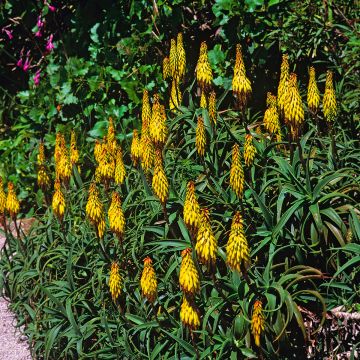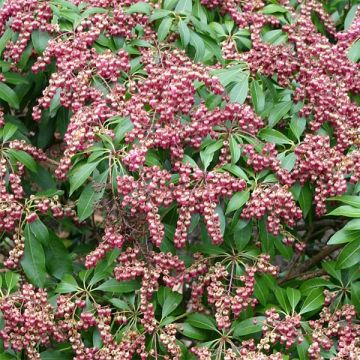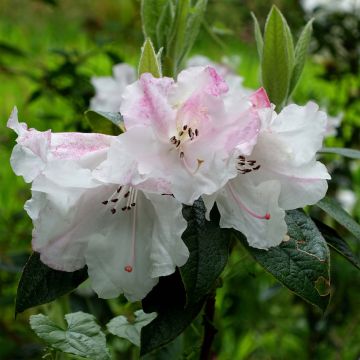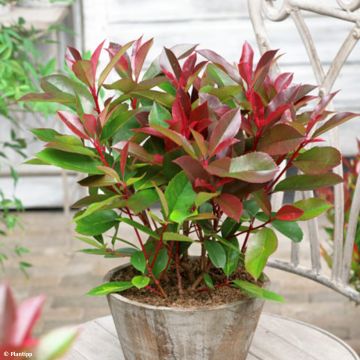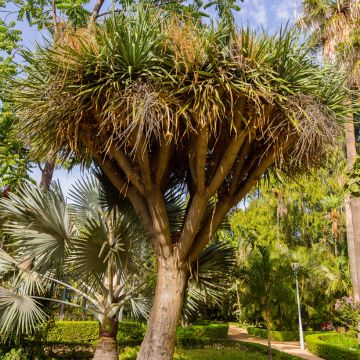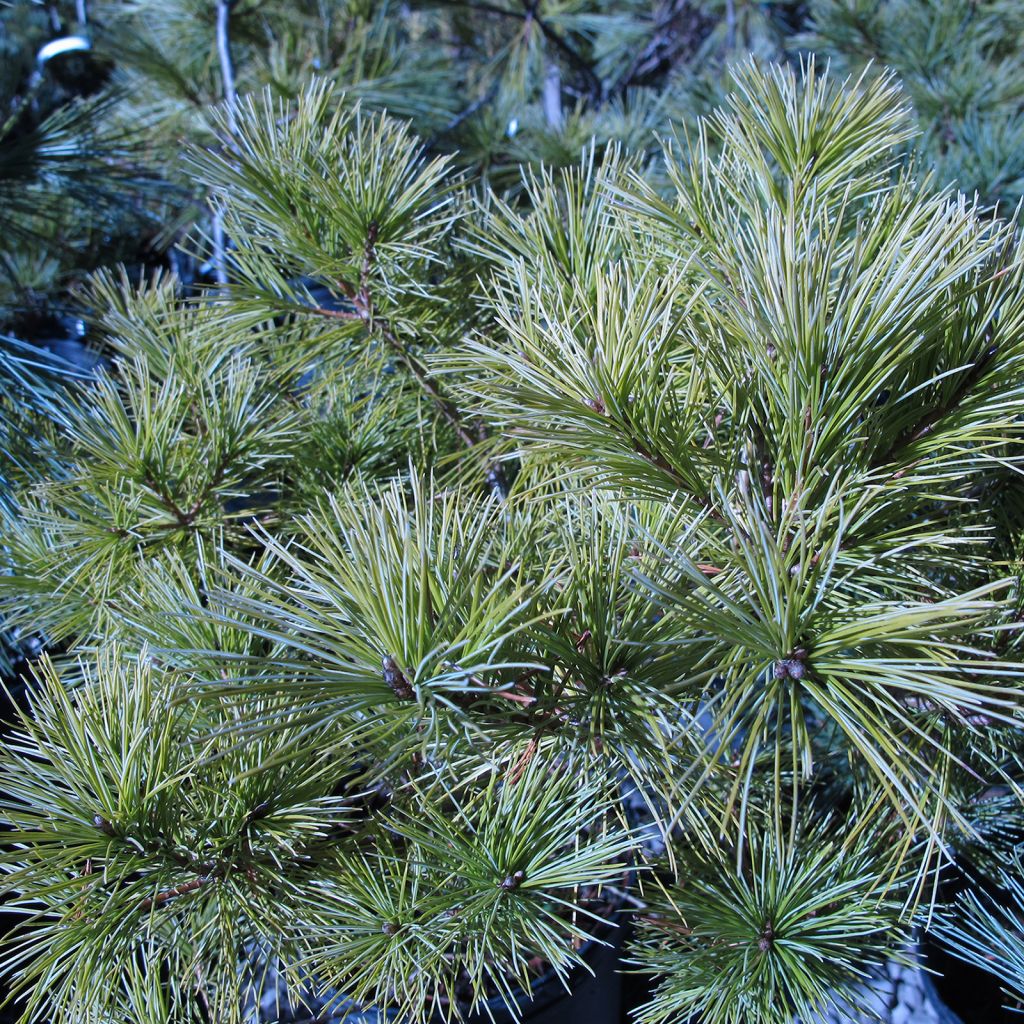

Pinus strobus Horsford - Pin de Weymouth nain
Pinus strobus Horsford - Eastern White Pine
Pinus strobus Horsford
Eastern White Pine, Weymouth Pine, Northern White Pine
Why not try an alternative variety in stock?
View all →This plant carries a 24 months recovery warranty
More information
We guarantee the quality of our plants for a full growing cycle, and will replace at our expense any plant that fails to recover under normal climatic and planting conditions.
From €5.90 for pickup delivery and €6.90 for home delivery
Express home delivery from €8.90.
Delivery to Corse prohibited: UE law prohibits the import of this plant from mainland France to Corse as part of the fight against Xylella fastidiosa. Please accept our sincere apologies.
More information
Does this plant fit my garden?
Set up your Plantfit profile →
Description
Pinus strobus 'Horsford' is a miniature form of the Weymouth pine, forming an adorable small and compact ball, covered with bright lime green needle-like foliage. Its fine and feathery texture, as well as its very small size, make it a remarkable conifer for small spaces, rockeries, borders, or pots on the terrace. Its growth is exceptionally slow. It is a variety that is not demanding in terms of well-drained, not too chalky soil, and is very hardy. It prefers sunny situations that enhance the beauty of its foliage.
Pinus strobus, also known as white pine, Weymouth pine or Lord's pine, is a conifer of the pine family, native to eastern North America, up to Newfoundland Island in Canada. This king of the forest is a monumental tree, a gigantic pyramidal Christmas tree reaching 90m (295ft) in height in its natural environment, but currently only reaching 45m (148ft) in height due to the destruction of its habitat and extensive exploitation. It is a very hardy species, often planted for reforestation in forests, or as an ornamental tree in large parks.
The 'Horsford' variety of this species is distinguished by its very small size, its very compact globose habit, and its very fine foliage. Its growth is very slow, around 2cm (1in) per year, so that at 15 years, it will not exceed 30cm (12in) in all directions. It is a many-stemmed bush, with branches emerging from the base, covered with lime green, soft and flexible needles, 5 to 6cm (2in) long. They are grouped in fives on the branches and form tufts almost as dense as pompoms. Their lower surface has two silver stomatal bands (respiration cells in plants). The bark of this shrub is smooth, greenish-grey on young specimens, becoming greyish-brown and fissured over time. The lower part of the tree, when mature, shows a whitened bark, hence the vernacular name "white pine". This variety does not produce cones in the early years.
The 'Horsford' Dwarf White Pine will find its place in all gardens, even the smallest ones, as it is undemanding and adapts to a wide variety of soils, except for very chalky soils, as well as to various climates. In small spaces, it will look good as a border in front of shrubs or perennials, and will also elegantly animate a rockery or a bed. It will of course make a magnificent subject in a pot that will enhance the balcony or terrace, and will work wonders in a Japanese garden. It goes well with large stones, the geometric lines of swimming pools, and masonry works. It can be associated with complementary grasses or prostrate (Juniperus horizontalis 'Blue Chip'), globose (Picea abies 'Little Gem'), or columnar (Juniperus communis 'Sentinel') dwarf conifers. The true graphic qualities of conifers naturally impose themselves in the design of a contemporary garden, which prefers the aesthetics of shapes, silhouettes, and textures to the waltz of blooms. These plants with their reassuring permanence structurally mark a bed, line the pathways, border the terrace, easily replacing the strong presence of trimmed boxwood or holly. The key is to play with volumes and colours.
Report an error about the product description
Pinus strobus Horsford - Eastern White Pine in pictures
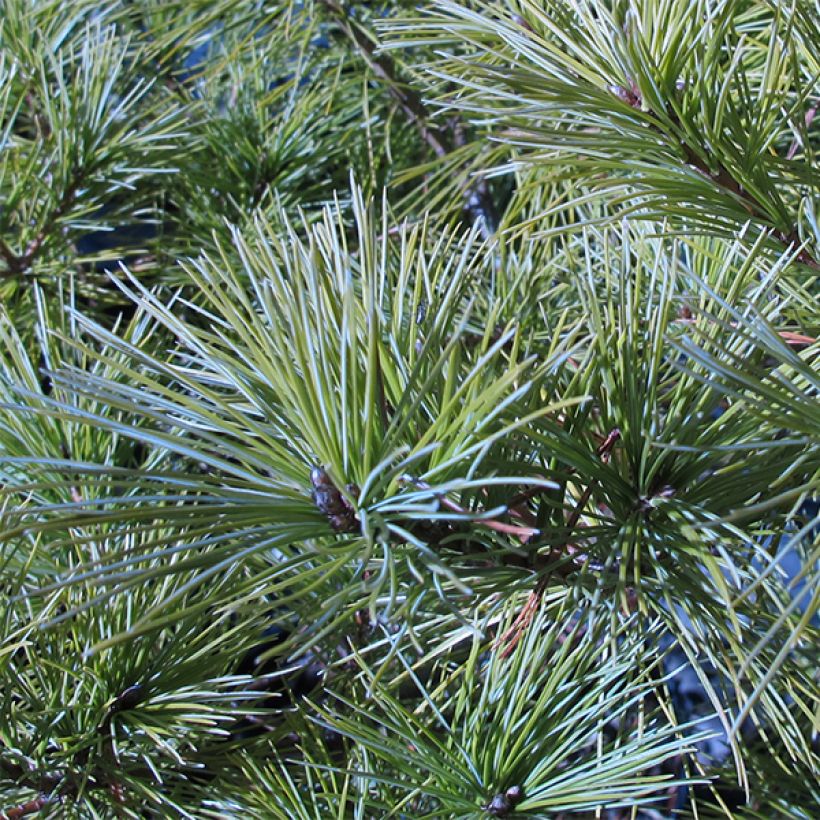

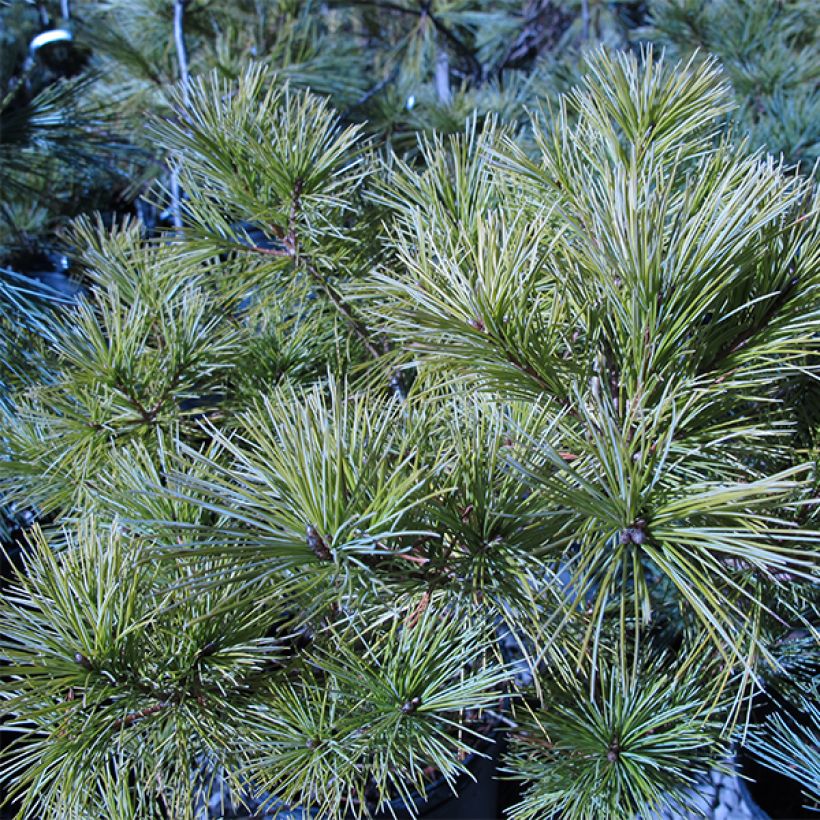

Plant habit
Flowering
Foliage
Botanical data
Pinus
strobus
Horsford
Pinaceae
Eastern White Pine, Weymouth Pine, Northern White Pine
Cultivar or hybrid
Other Pinus - Pine
Planting and care
Pinus strobus 'Horsford' should be planted from September to November and from February to June in ordinary soil, even poor, even clayey or slightly calcareous, but well-drained. Its preference goes to light, sandy or loamy soils, low in limestone and cool. Choose a sunny location or, at most, partially shaded in hot climates. Soak the root balls well before planting. Add organic amendment at planting and water generously for the first three years, and in case of prolonged drought. Apply a special conifer fertilizer every year in April and cultivate the soil in summer. This very hardy conifer (up to -30°C (1°F) at least) is not afraid of the wind, but it fears waterlogged soils in winter and atmospheric pollution. This bush does not require pruning.
Planting period
Intended location
Care
-
, onOrder confirmed
Reply from on Promesse de fleurs
Evergreen shrubs
Haven't found what you were looking for?
Hardiness is the lowest winter temperature a plant can endure without suffering serious damage or even dying. However, hardiness is affected by location (a sheltered area, such as a patio), protection (winter cover) and soil type (hardiness is improved by well-drained soil).

Photo Sharing Terms & Conditions
In order to encourage gardeners to interact and share their experiences, Promesse de fleurs offers various media enabling content to be uploaded onto its Site - in particular via the ‘Photo sharing’ module.
The User agrees to refrain from:
- Posting any content that is illegal, prejudicial, insulting, racist, inciteful to hatred, revisionist, contrary to public decency, that infringes on privacy or on the privacy rights of third parties, in particular the publicity rights of persons and goods, intellectual property rights, or the right to privacy.
- Submitting content on behalf of a third party;
- Impersonate the identity of a third party and/or publish any personal information about a third party;
In general, the User undertakes to refrain from any unethical behaviour.
All Content (in particular text, comments, files, images, photos, videos, creative works, etc.), which may be subject to property or intellectual property rights, image or other private rights, shall remain the property of the User, subject to the limited rights granted by the terms of the licence granted by Promesse de fleurs as stated below. Users are at liberty to publish or not to publish such Content on the Site, notably via the ‘Photo Sharing’ facility, and accept that this Content shall be made public and freely accessible, notably on the Internet.
Users further acknowledge, undertake to have ,and guarantee that they hold all necessary rights and permissions to publish such material on the Site, in particular with regard to the legislation in force pertaining to any privacy, property, intellectual property, image, or contractual rights, or rights of any other nature. By publishing such Content on the Site, Users acknowledge accepting full liability as publishers of the Content within the meaning of the law, and grant Promesse de fleurs, free of charge, an inclusive, worldwide licence for the said Content for the entire duration of its publication, including all reproduction, representation, up/downloading, displaying, performing, transmission, and storage rights.
Users also grant permission for their name to be linked to the Content and accept that this link may not always be made available.
By engaging in posting material, Users consent to their Content becoming automatically accessible on the Internet, in particular on other sites and/or blogs and/or web pages of the Promesse de fleurs site, including in particular social pages and the Promesse de fleurs catalogue.
Users may secure the removal of entrusted content free of charge by issuing a simple request via our contact form.
The flowering period indicated on our website applies to countries and regions located in USDA zone 8 (France, the United Kingdom, Ireland, the Netherlands, etc.)
It will vary according to where you live:
- In zones 9 to 10 (Italy, Spain, Greece, etc.), flowering will occur about 2 to 4 weeks earlier.
- In zones 6 to 7 (Germany, Poland, Slovenia, and lower mountainous regions), flowering will be delayed by 2 to 3 weeks.
- In zone 5 (Central Europe, Scandinavia), blooming will be delayed by 3 to 5 weeks.
In temperate climates, pruning of spring-flowering shrubs (forsythia, spireas, etc.) should be done just after flowering.
Pruning of summer-flowering shrubs (Indian Lilac, Perovskia, etc.) can be done in winter or spring.
In cold regions as well as with frost-sensitive plants, avoid pruning too early when severe frosts may still occur.
The planting period indicated on our website applies to countries and regions located in USDA zone 8 (France, United Kingdom, Ireland, Netherlands).
It will vary according to where you live:
- In Mediterranean zones (Marseille, Madrid, Milan, etc.), autumn and winter are the best planting periods.
- In continental zones (Strasbourg, Munich, Vienna, etc.), delay planting by 2 to 3 weeks in spring and bring it forward by 2 to 4 weeks in autumn.
- In mountainous regions (the Alps, Pyrenees, Carpathians, etc.), it is best to plant in late spring (May-June) or late summer (August-September).
The harvesting period indicated on our website applies to countries and regions in USDA zone 8 (France, England, Ireland, the Netherlands).
In colder areas (Scandinavia, Poland, Austria...) fruit and vegetable harvests are likely to be delayed by 3-4 weeks.
In warmer areas (Italy, Spain, Greece, etc.), harvesting will probably take place earlier, depending on weather conditions.
The sowing periods indicated on our website apply to countries and regions within USDA Zone 8 (France, UK, Ireland, Netherlands).
In colder areas (Scandinavia, Poland, Austria...), delay any outdoor sowing by 3-4 weeks, or sow under glass.
In warmer climes (Italy, Spain, Greece, etc.), bring outdoor sowing forward by a few weeks.

































